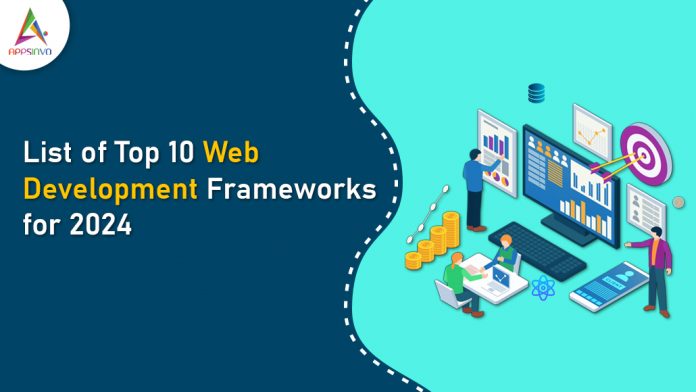| Table Of Contents |
In today’s ever-changing world, having a strong online presence is essential for businesses, and a key component of that is having a well-designed website. Even traditional retailers who primarily rely on physical visits have recognized the importance of expanding their reach through the Internet. To create engaging user experiences, many successful companies, such as Netflix, Instagram, LinkedIn, Facebook, and YouTube, have leveraged reliable web application frameworks. These frameworks have played a crucial role in enabling these giants to deliver high-performance applications.
There are plenty of web development frameworks available on the market for creating a simple static website or a complex SaaS application. To select the best web development framework for your business, you must brainstorm and investigate each framework’s features. You’ll most likely end up scratching your head, so we’ve compiled a list of the ten best web development frameworks to make the process as simple and easy as possible.
What are Web Frameworks?
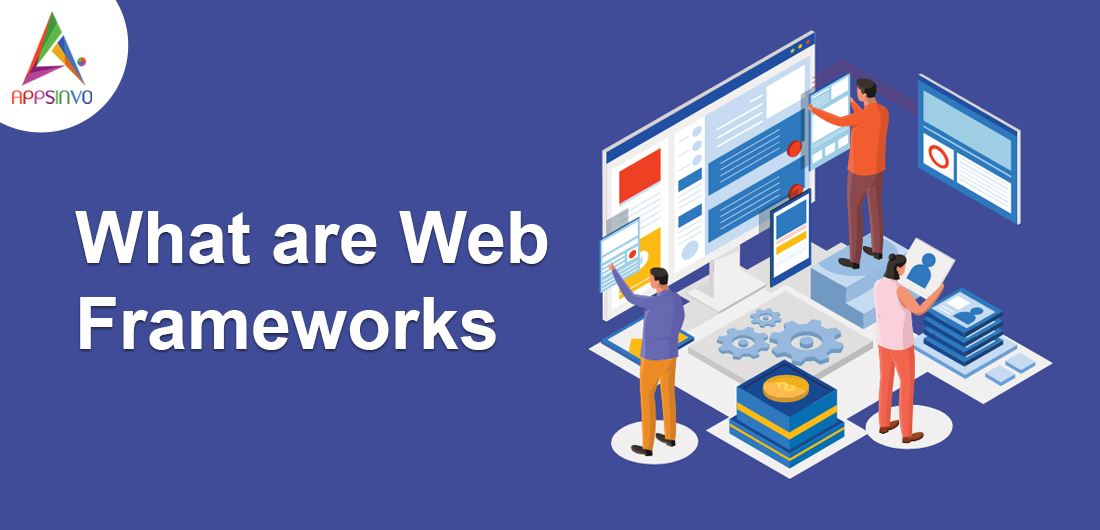
Web Development Framework, or simply “web framework,” is a software framework providing a set of tools for developing web applications, such as web services, web resources, and web APIs. A web development framework provides a variety of prewritten components, code snippets, and entire application templates to help web developers save time.
Frameworks offer standardized development and design conventions that can be used and modified to meet the needs of your website. A web development framework’s purpose is to automate the most common tasks performed during the development phase. Frameworks provide a starting point from which we can focus on features rather than configuration details.
Improves Code Efficiency & Reusability:
Web frameworks offer developers a coding environment that is fast, efficient, and responsive. Frameworks also include advanced features such as hot reloading and live reload, which shorten development cycles.
Reduce complexity and eliminate errors:
The framework streamlines the development process by reducing errors and bugs. The framework handles all of the background details, such as data binding and configuration, allowing you to focus solely on your app.
Bootstrap Development:
Developers can use a variety of tools and packages to jumpstart their development processes. The use of frameworks saves programmers from having to write each script from scratch. Even if you don’t have much experience with web development, frameworks can help you explore specific features with the same enthusiasm as a more experienced developer.
Reduce Code Length:
Frameworks eliminate the need for expensive lines of programming when adding standard functionality to a website. Frameworks make the development process easier and faster for developers by incorporating code generation features.
Better Security:
Frameworks consist of security mechanisms and features that help developers protect websites from current and future security threats. Frameworks can be used to protect web pages from cyberattacks such as data tampering, SQL injection, DDoS (distributed denial of service), and so on. You may also develop custom security specifications for websites using open-source web frameworks.
Easy Debugging and Maintenance:
Most frameworks have built-in testing and debugging capabilities. Because of code reuse and standard practices, your application is already simpler to maintain and understand. You can easily maintain and update your app with features that involve code completion, unit testing, simultaneous code editing, and others.
Types of Web Development Frameworks
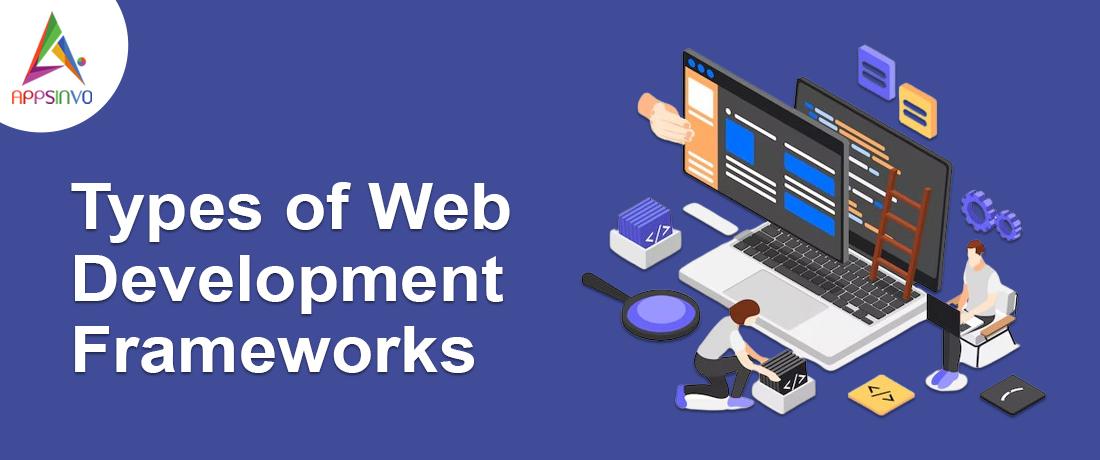
Web frameworks are typically divided into two types: front-end (client-side) and back-end (server-side). Full-stack frameworks allow for development on both ends.
Front- End Frameworks (client side)
A client-side framework is used for managing user interfaces. The front-end of a web application is what you see and interact with. A website’s user experience is critical to any business. Although complex operations and functions may take place in the background, the user experience and visuals must be seamless. To accomplish this, frontend frameworks are used, which make it easier to create interactive, user-centric websites.
Back-End Frameworks (server side)
Frameworks for backend web development are simply collections of modules and tools that help developers create website structures. The backend is made up of the server, the database, and the code that works with them. A server-side framework ensures that the website runs smoothly behind the scenes. They make it simpler to complete common web development tasks like URL routing, database interaction, user authentication, enhanced security, push notifications, and more.
List of Top 10 Web Development Frameworks for 2024
Various the modern technology market flooded with web development frameworks, choosing the right one can be difficult, particularly given the abundance of options. Here’s a list of the top web development frameworks, along with the features that differentiate them.
1. React
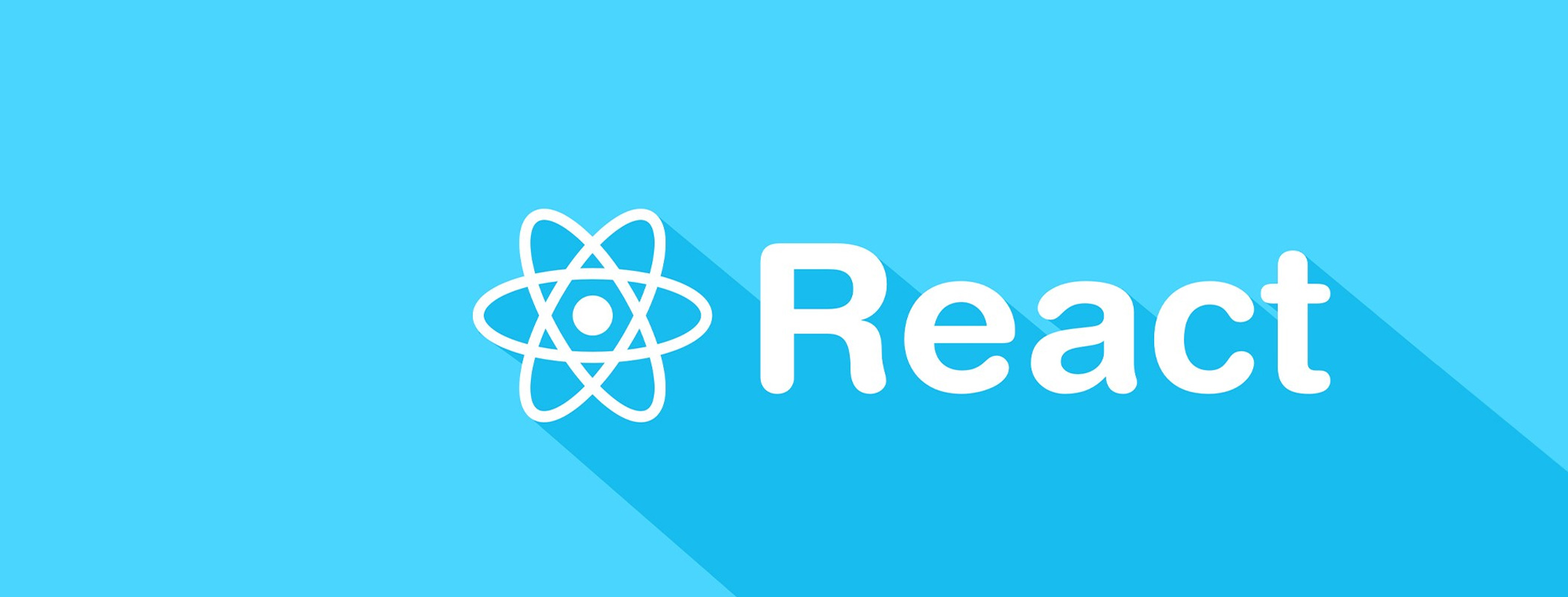
Meta (formerly Facebook) introduced React (or React JS) in 2013, and it has since gained enormous popularity in the web development industry. In reality, React is an open-source JavaScript library that can be used to create interactive user interfaces, making it appealing to any developer or business looking for front-end development tools.
If you’re creating dynamic web applications or single-page apps, React is a better option. React can also be used to create mobile apps. It’s simple to learn, SEO-friendly, and adaptable. When it comes to server-side rendering and SEO support, React outperforms all other front-end frameworks. Netflix, Instacart, Salesforce, Flipboard, Dropbox, and Asana are among the most popular web applications that use React JS.
Key Features
The Virtual Document Object Model (DOM) is a key feature of React that improves its functionality. Even heavy-load applications will run smoothly and quickly thanks to its virtual DOM.
- Componentizes frontend code.
- Organizes code and data to increase code reusability.
- In addition to its dominant position on the web, it has gained a significant share of the mobile market with React Native, a cross-platform mobile development framework.
- In React applications, information flow is unidirectional. One-way data bindings make React less prone to errors and easier to debug, resulting in an efficient framework.
- React’s flexibility enables developers to build applications that dynamically adapt to any user interface. Software engineers have used React to create applications for a wide range of user interfaces, including web, mobile, desktop, and smart TVs.
2. Angular

In 2010, Google launched AngularJS, an open-source JavaScript framework. With the release of the rewritten version “Angular 2.0,” which allows for the development of high-performance and large-scale JavaScript-based web applications, Angular entered the spotlight and drew the attention of many major technological players.
With its extensive feature set and ability to work with cross-platform and client-side frameworks, Angular applications run smoothly on both the web and mobile platforms. Angular encourages code consistency by incorporating HTML, CSS, and TypeScript (a superset of JavaScript), as well as web development tools. The use of TypeScript makes this the ideal framework for developing enterprise-level applications. PayPal, Forbes, UpWork, and Microsoft Xbox are some of the most popular web applications that use Angular JS.
Key features:
- Angular reduces development time by utilizing boilerplate coding.
It reduces build time by allowing developers to reuse components and even the architecture, thereby simplifying the development process. Furthermore, it simplifies the testing procedure. - Promotes reusability and increases application scalability.
Using open-source libraries like Angular Material and AgGrid, you can create a responsive and dynamic user interface with a variety of features. - Angular CLI (Command Line Interface) is widely regarded as one of the best command-line interfaces for developing, scaffolding, and maintaining web applications.
- To debug web applications, Angular supports or offers Chrome and Firefox Dev tools and extensions. The framework also includes a large number of third-party libraries.
3. Vue JS

Vue JS is another cutting-edge open-source JavaScript framework that can create visually stunning and interactive user interfaces. Google created it in 2014 with the goal of making it a viable alternative to React and Angular for developing SPAs (Single Page Applications), high-performance progressive web apps, and visually appealing user experiences. It is a progressive JavaScript framework that combines the best aspects of React.js (Virtual DOM) and Angular.js.
Vue JS’s simplicity and versatility have cemented it as one of the best web development frameworks for creating responsive web applications. Its adaptable design structure and TypeScript support have piqued the interest of numerous web development firms and enterprises. Some of the most popular web applications that use Vue JS are Gitlab, Netlify, 9GAG, Behance, Chess, and others.
4. Ember JS
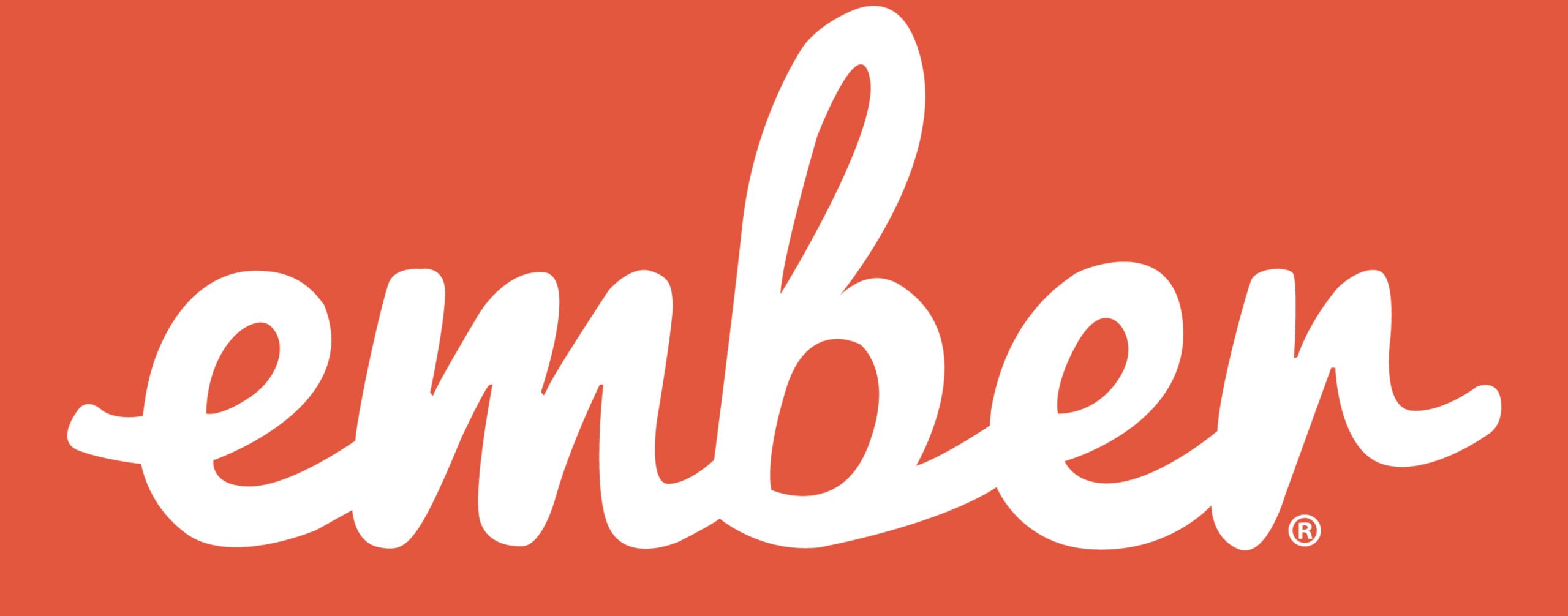
Ember JS was released in late 2011 and is widely regarded as one of the most productive open-source JavaScript frameworks based on the MVVM paradigm. The development model is built around HTML (Hypertext Markup Language) and CSS (Cascading Style Sheets). Ember 2.0, which included excellent stability, was released in 2015, and it quickly gained popularity for its ability to create maintainable and reusable JavaScript web applications.
Ember is designed to improve developer productivity by either eliminating time-consuming features or incorporating JS best practices into the core design. It is a popular framework for developing single-page and dynamic client-side applications that can be extended with general idioms and advanced practices. Mobile and desktop applications can also be created with it. Ember JS is used by many popular web applications, including LinkedIn, Apple, DigitalOcean, and Intercom.
5. JQuery
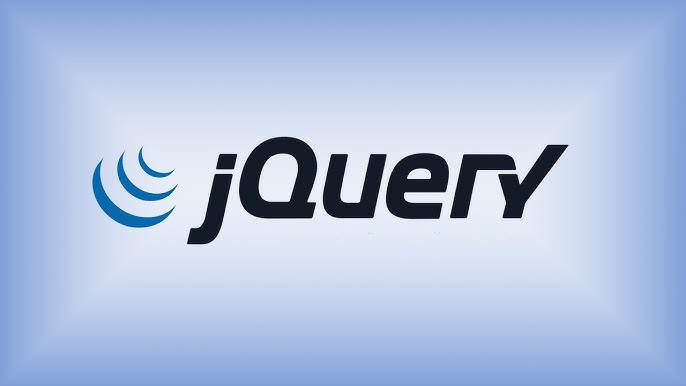
As one of the oldest players, JQuery is still thriving and relishes the opportunity to be adored by developers. It was first released in 2006 as an open-source, lightweight JavaScript library to assist developers in creating robust web applications, and it has since grown in popularity due to its extensive features. It is a small, fast JavaScript library that facilitates the interaction of HTML elements and JavaScript code.
JQuery simplifies CSS animations, event handling, and Ajax calls, resulting in more interactive web pages. A significant advantage of using jQuery is that it adheres to SEO best practices. JQuery is simple and easy to use, so there is no need to write extensive javascript code. WordPress, GeeksforGeeks, Bitbucket, Trello, and Codepen are some of the most popular web applications that use JQuery.
Back-End Frameworks
Web development is now impossible without backend frameworks. To achieve optimal performance and scalability, developers must first find the right framework. Choosing a backend framework for your web development project will ensure that you get the best performance, quickest development, and most flexibility possible. Let’s look at some of them.
6. Ruby on Rails
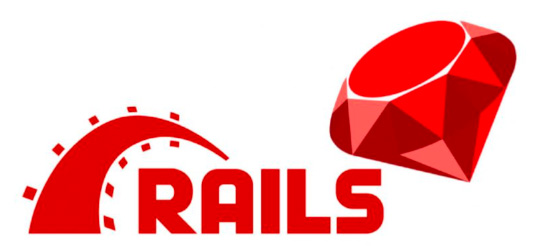
Ruby on Rails, also known as Rails, is a popular open-source the back end web development framework based on MVC (Model-View-Controller) that emphasizes the use of valuable and well-known software engineering patterns and paradigms such as CoC (Convention Over Configuration), DRY (Don’t Repeat Yourself), and the active record pattern.
Ruby on Rails has grown to become the leading backend framework, competing fiercely with all other web technologies, since its introduction in 2005. The framework is ideal for developing high-speed applications and comes with everything needed to create a database-driven application. Ruby on Rails allows you to develop applications ten times faster than other Java frameworks do. Github, Airbnb, Fiverr, Shopify, Slideshare, Basecamp, Hulu, and other popular web applications all make use of JQuery.
7. Django
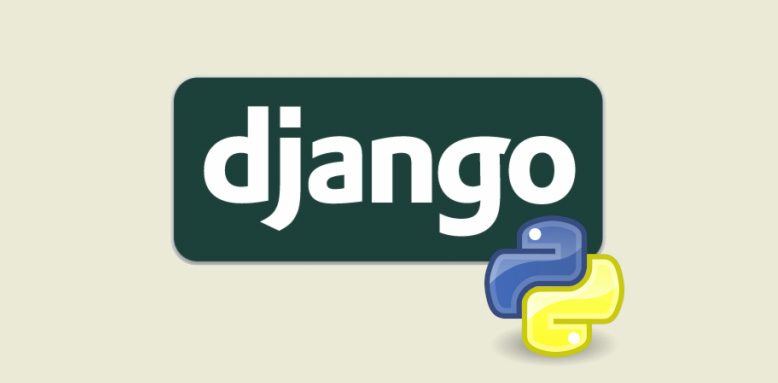
Django is a popular, open source Python-based back-end web development framework that is gaining popularity among developers and businesses because it makes it easier to create complex, highly scalable, and data-driven web apps. Python syntax rules help programmers write readable, clean, and maintainable code, allowing them to create highly functional web applications.
The framework was created by experienced engineers, making it ideal for developing API features such as simple GraphQL integration. You can use this framework in any format, including HTML, JSON, or XML. Some of the most popular web applications that use Django are YouTube, Instagram, Spotify, The Washington Post, BitBucket, and others.
8. Laravel
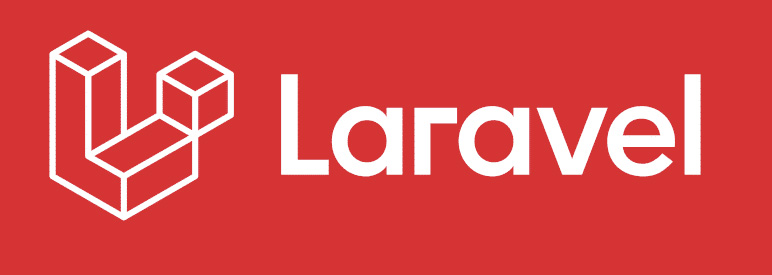
Taylor Otwell created Laravel, the most popular open-source backend framework written in PHP (Hypertext Preprocessor), in 2011. Laravel includes built-in API support and a reasonable number of packages for extending its capabilities.
This excellent framework caters to all segments, whether you’re developing web applications for small and medium-sized businesses or large multi-million dollar corporations. Unlike other frameworks, Laravel provides expressive, elegant syntax, allowing developers to be creative and flexible while still managing backend details. The primary goal of Laravel is to make updating websites enjoyable and simple. This is a popular choice among developers due to its exceptional versatility, features, and execution. Watchseries, Deltanet Travel, MyRank, Laracasts, Neighbourhood Lender, and others are among the most popular web applications built with Laravel.
9. ASP.NET

ASP.NET is a popular open-source web development framework that can be used to create dynamic web applications for both PCs and mobile devices. Microsoft created it to keep up with the most recent web development trends, allowing programmers to create dynamic websites, applications, and services. ASP.NET Core was released in 2016, and its scalability, flexibility, and high performance features have enticed developers and businesses all over the world.
Since then, it has grown in popularity as a tool for developing high-performance, secure web applications. It also works with front-end frameworks that use JavaScript. TacoBell, Visual Studio, DELL, Stack Overflow, MarketWatch, GoDaddy, and other popular web applications all use ASP.NET.
10. Express.js
Express.js, an open-source, lightweight backend framework for Node.js, is engineered for crafting web applications, mobile apps, and APIs. Renowned for its robust features and minimalist design, it has surged in popularity since its inception. Express augments the rich functionality of Node.js by furnishing essential web application features, thus offering a versatile framework.
Noteworthy attributes include debugging capabilities, efficient routing, and swift backend development, making Express a top choice among developers. Its streamlined nature facilitates rapid development of Node.js-based web applications. Among its notable adopters are industry giants like PayPal, Freecodecamp, Coursera, Myntra, MuleSoft, and Accenture.
Conclusion
Frameworks have become a vital component of web development; as the standards of web applications rise, so does the complexity of the technology required. As a result, using frameworks recommended by thousands of developers worldwide is an excellent way to create rich and interactive web applications. The number of Web Frameworks has increased dramatically in recent years, making it critical to select the right framework for your project’s needs.
Given Below are Some Related Blogs |


